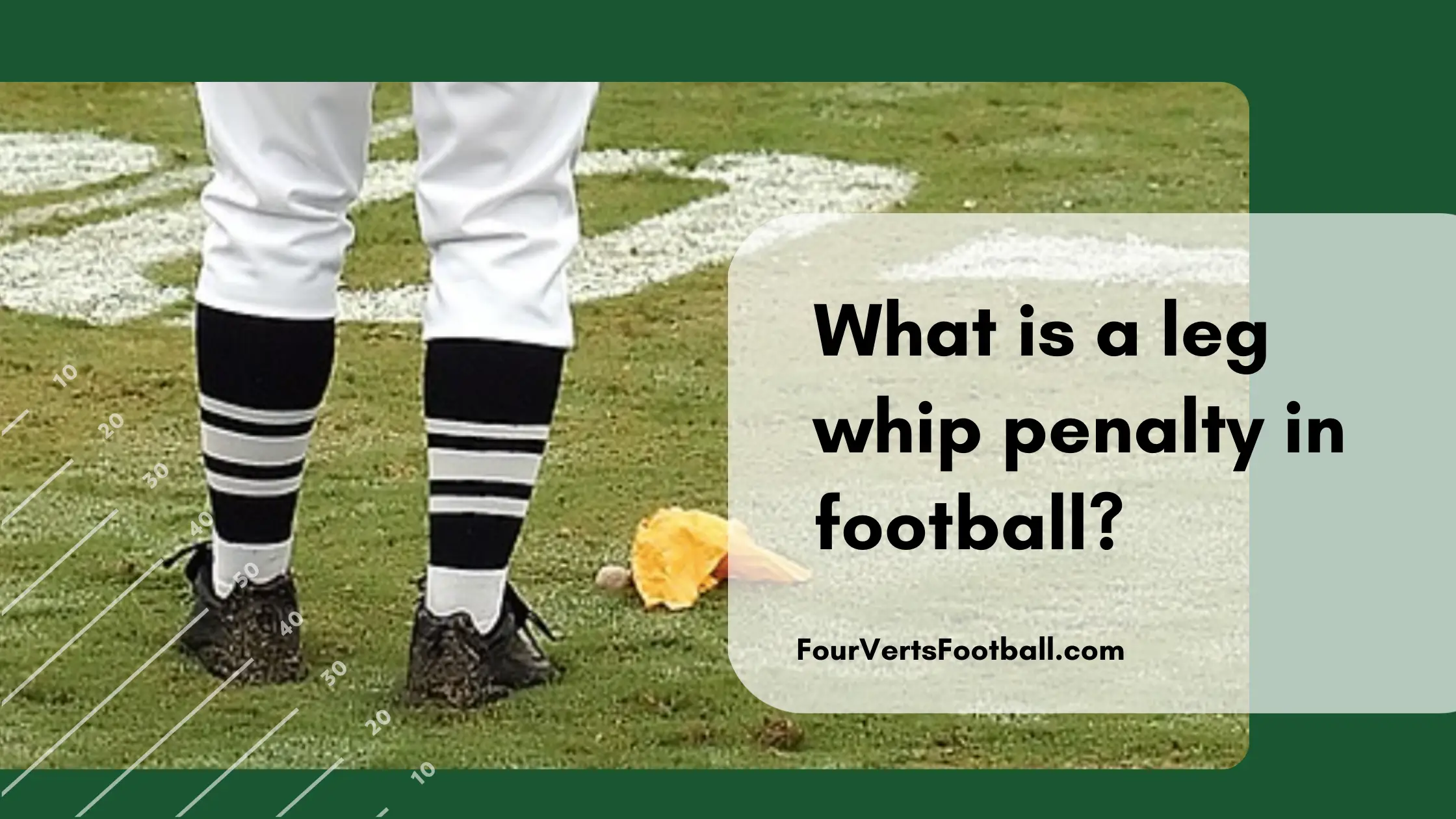The game of football is full of different rules and terminology. So much so that even the most seasoned fans may be left asking questions after an obscure penalty is called. One term often asked about is the leg whip penalty.
A leg whip penalty in football occurs when a player swings their leg and hits their opponent in a whipping motion. This is different from a tripping penalty which occurs when a player holds out their leg to trip a player.
In the NFL a leg whip is going to earn you an unnecessary roughness penalty. The result of this penalty is a loss of fifteen yards and a potential ejection of the offending player.
If the penalized player was deemed to have done this with intent to injure he may be ejected from the game.
In the NCAA there is no direct mention of a leg whip penalty in the rule book. Instead, this penalty fits under tripping. Tripping in the NCAA is a fifteen-yard penalty as it is considered a personal foul.
To learn about penalties similar to leg whips read our guide to targeting in football or spear tackles.
What Is A Leg Whip In Football?
The official definition of a leg whip in the NFL is as follows:
“using the foot or any part of the leg to strike an opponent with a whipping motion”
Though when it comes to leg whips in football there is a lot more that goes into it than that. Leg whips used to be a much larger part of football.
Prior to them being ruled illegal they were a tool for offensive linemen to use when looking to make a block.
In most cases, a leg whip penalty is going to occur when a lineman falls to the ground. When a lineman falls over it is almost impossible for them to get their hands on the defender.
For this reason, the practice of sticking your leg up out behind after falling became a common last-ditch strategy.
Sticking this leg in the air would often initiate contact on a defenders thighs or midsection. Leg whips do not necessarily result in an effective block but they did make the defender’s job a little harder.
The reason that these blocks are banned is due to the safety hazard they present. When a player makes a leg whip block they are kicking their leg into the air with the studs of their cleats up.
The studs on the bottom of football cleats can be very dangerous. This paired with the fact they are being put with force into an opposing player means that injuries can easily happen on these plays.
Additionally blocking with a leg whip does not add much to the game. If the blocker has already fallen to the ground then he has failed to do his job.
Since these plays are so rare there are barely any videos of them occurring during football games. Below we’ve included a fairly low-quality video that features a leg whip by the running back in pass protection.
Leg Whip Vs Tripping
In the NFL the difference between leg whip penalties and tripping is quite important. A tripping penalty is going to result in a loss of ten yards while a leg whip will result in fifteen and a potential ejection from the game.
The main difference between these two penalties is that one involves swinging a leg while the other involves sticking one out.
On a tripping call, the player may stick out his leg in the path of the opponent. The penalty will then be called if the player trips over this leg.
On the leg whip penalty, a player will swing his leg at his opponent. Oftentimes the cleats will be pointing up which makes this play much more dangerous.
The degree of injury risk is what makes the leg whip penalty more severe than a tripping penalty in the NFL.

